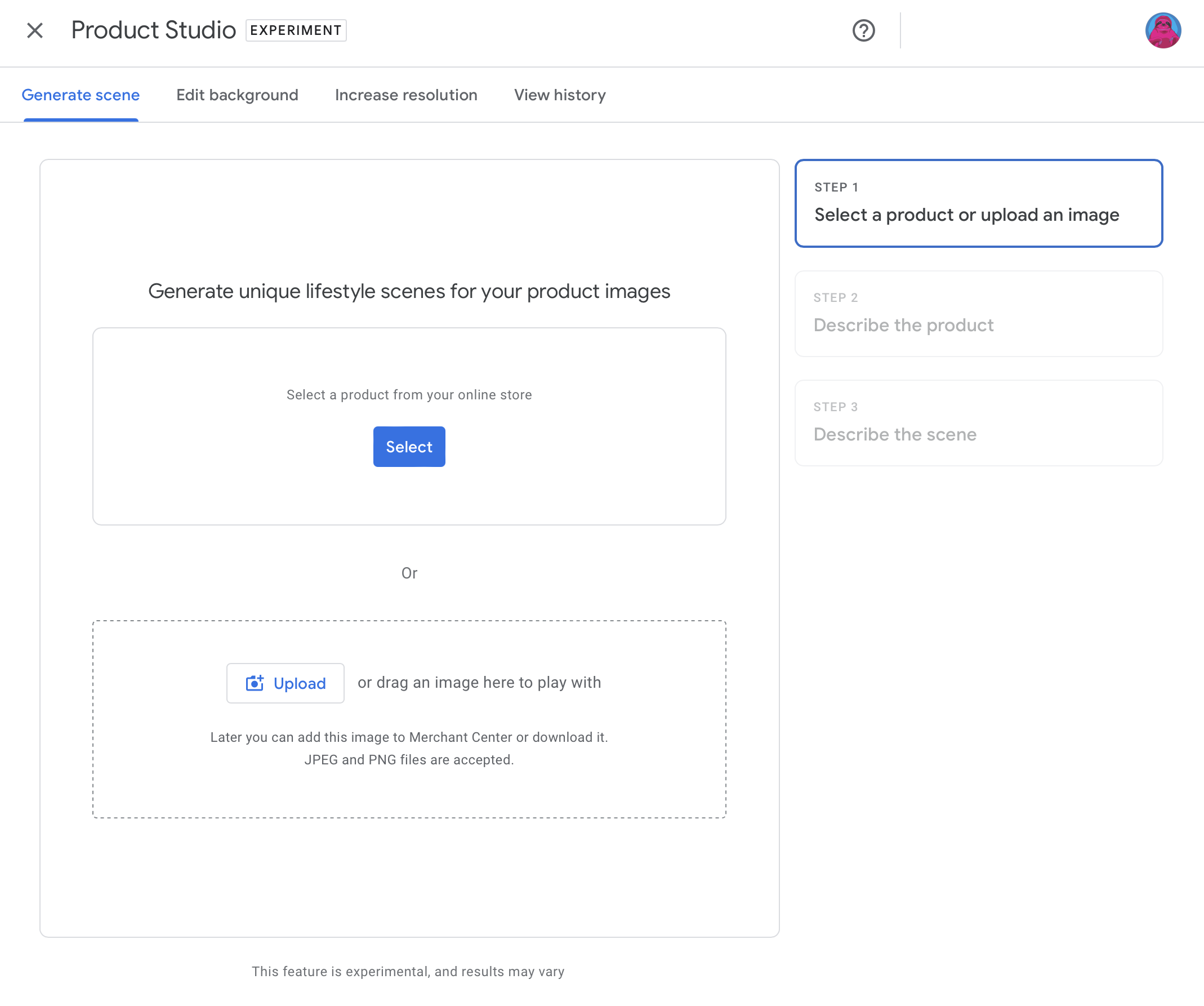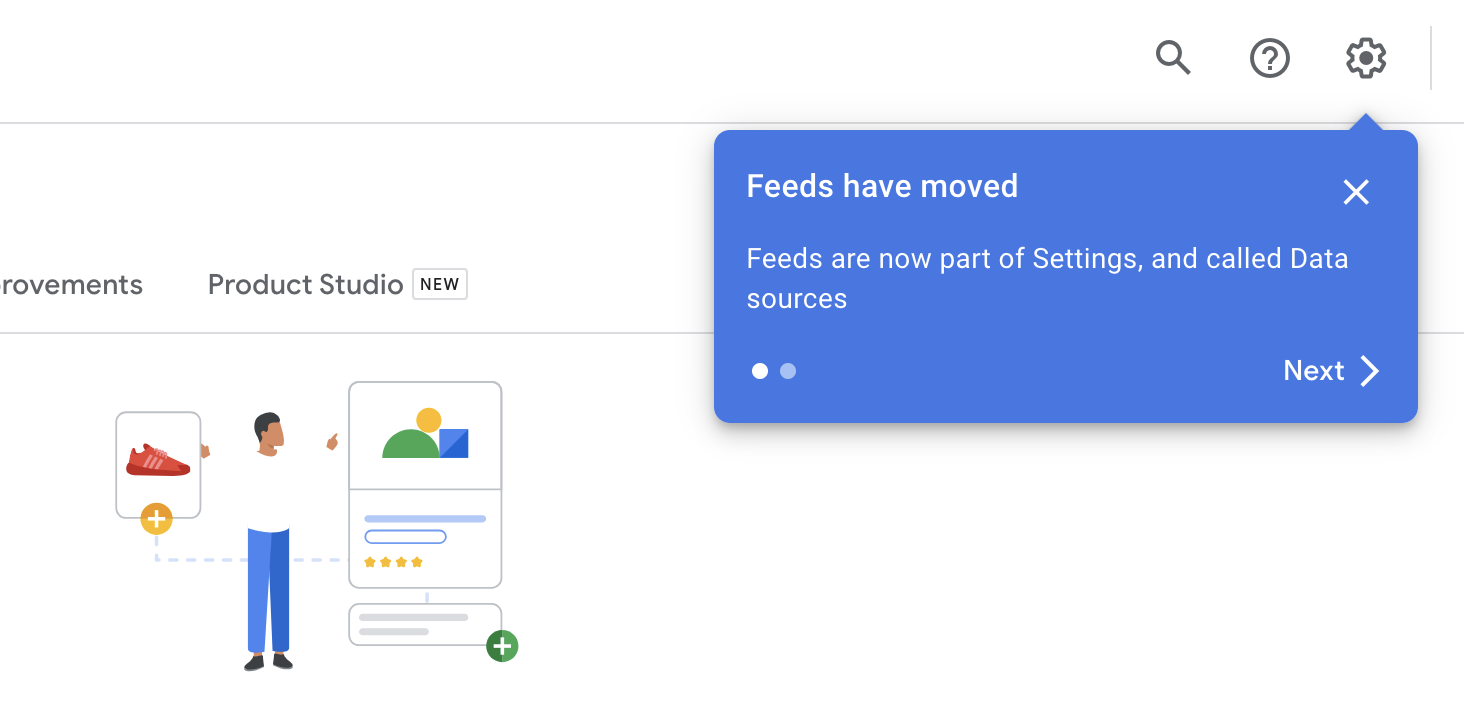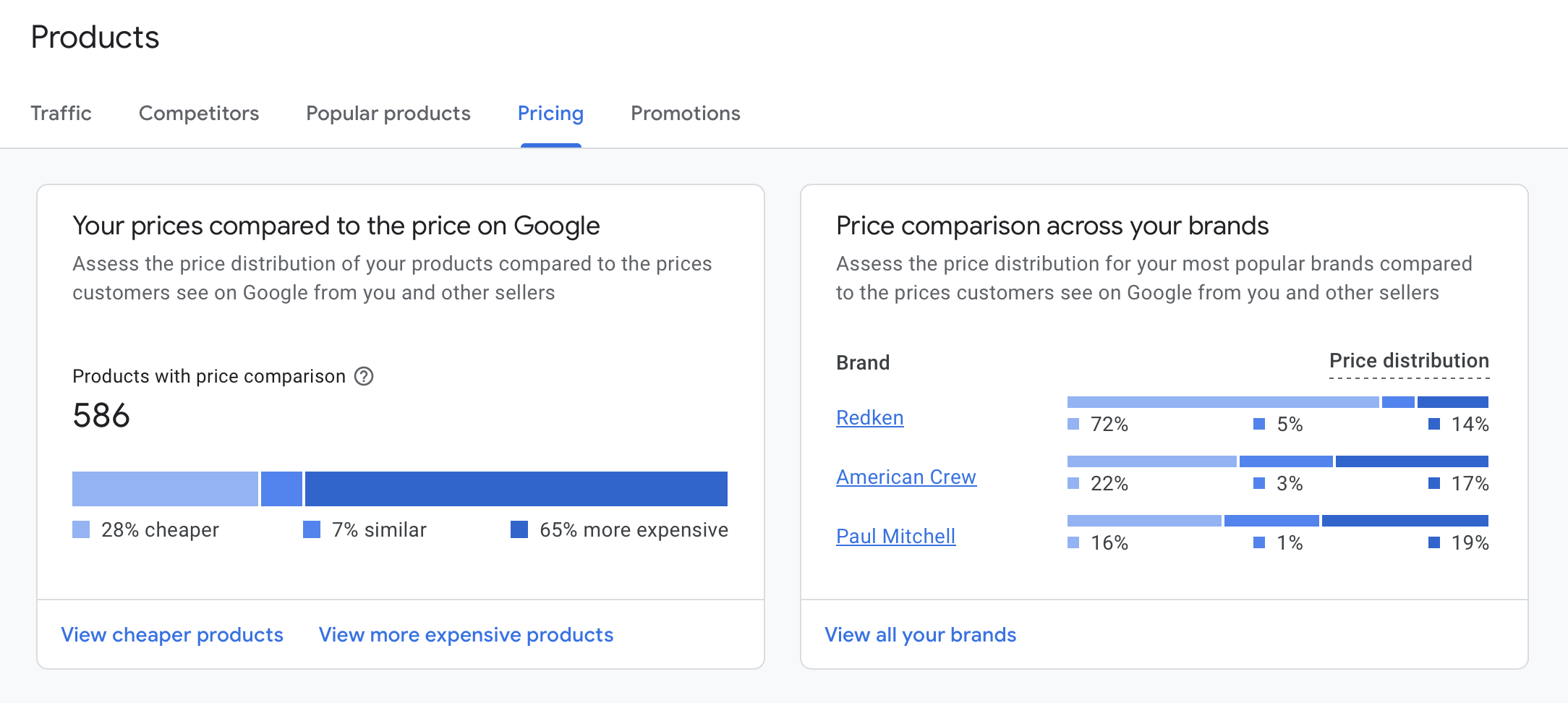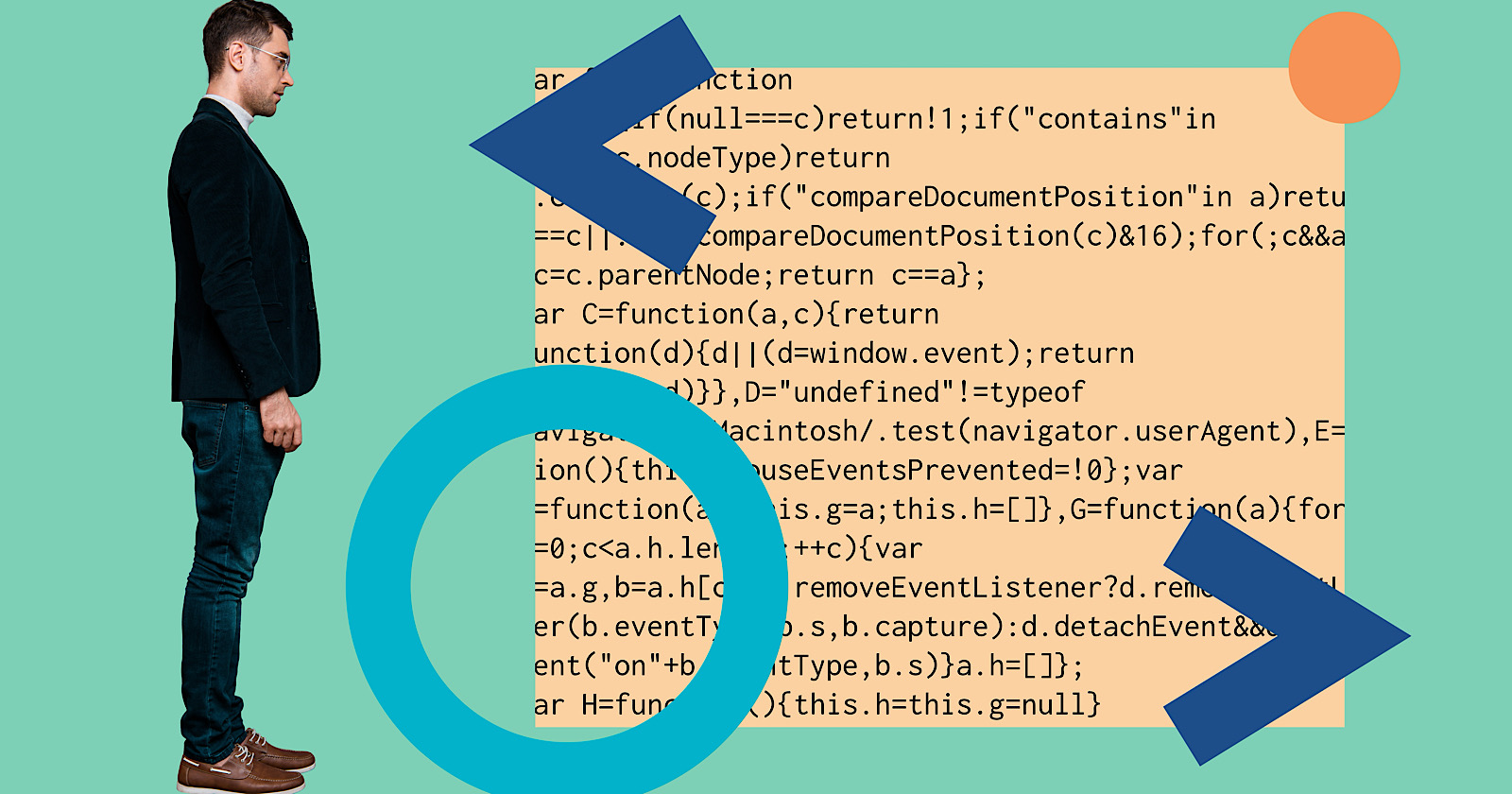Preparing For The Feedless Future With Google Merchant Center Next via @sejournal, @gilgildner
Discover the evolution of Google Merchant Center and how it has changed ecommerce advertising with product feeds so that you can prepare for what's next. The post Preparing For The Feedless Future With Google Merchant Center Next appeared first...

For some years now (ever since Google Merchant Center was introduced in 2010), ecommerce advertisers have been working with product feeds.
It’s historically been a complex and often fragile process, but thanks to the introduction of Google Merchant Center Next, we have some new tools at our fingertips.
Here’s a look at how things are changing with Next.
The History Of Google Merchant Center
Back in the very beginning, we remember having to download CSV files from the website with all product information, and embarking on a long process of cleaning up and formatting the data so that it could be manually uploaded into Google Merchant Center (GMC).
In the early days, before policies became more strict, you could even use Merchant Center to advertise anything from repair services to round-the-world gap year vacations!
But in time, GMC became far more sophisticated (and also more restricted). Along with increased restrictions came the ease of use. Uploading data became much easier and more stable.
Eventually, plugins and connectors began doing most of the job for you, then platforms like Shopify got native integrations, and now with the advent of Google Merchant Center Next, you almost don’t need feeds at all!
Common Complaints About GMC
For most of the past 14 years of Merchant Center history, you’ve likely heard a few bits of common wisdom repeated ad nauseam:
Optimize your shopping feeds inside of GMC! Keep your Google categories accurately assigned inside of GMC! Add your metadata inside of GMC! Fill out all the boxes in GMC!
The world is slowly changing, and now, with GMC Next, you don’t have to make these changes within the GMC interface.
The changes need to happen on the website. While feeds won’t totally go away overnight (and neither will the need to optimize products), Google Merchant Center Next is ushering in a new feed-less era.
Announced at Google Marketing Live 2023, Merchant Center Next actually hasn’t taken hold as rapidly as expected. Even over a year after its announcement, most but not all of our client accounts have shifted over.
GMC Next started rolling out for new users first, but Google has stated the full rollout should be completed sometime in 2024. Whether this is the actual date is yet to be seen.
What Is Google Merchant Center Next?
The core differentiator with Merchant Center Next is the simplification of website verification and the automatic population of product feeds from your website. This means that Google will scrape product information, pricing, imagery, and more directly from your site.
Additionally, it has integrated a new feature called Product Studio that allows you to use AI to update or change your product images and offers more comprehensive performance insights.
 Screenshot from Google Merchant Center Next, August 2024
Screenshot from Google Merchant Center Next, August 2024
Many marketers had a negative gut reaction to the announcement of Next, but our entire team at Discosloth was actually pretty excited about this development.
Feed management (and especially the involvement of any third-party integrations, connectors, and tools) has always been a bit clunky, so the removal of any friction is a welcome feature.
While you can still use Shopify to upload your product data, many people have found it to be more difficult with some products not being uploaded properly. As it turns out, feeds have technically gone away, but in a way, they have actually just been renamed to Data Sources.
 Screenshot from Google Merchant Center Next, August 2024
Screenshot from Google Merchant Center Next, August 2024
It appears that product feeds, as we know them, might be going away.
This doesn’t mean that product data management will become obsolete; rather, it indicates a shift in how this data is handled within the Merchant Center Next ecosystem.
The Mindset Change
I ultimately think that removing feeds is a fantastic approach because it shifts the mindset of marketers. Rather than focusing on incremental metadata optimization on hidden feeds, it will instead encourage advertisers to update & improve the actual listings on the actual site.
Rather than just making sure endless attributes are filled out in the backend, it means that the actual website and associated metadata will need to be correctly optimized. This eliminates double work and conflicting data.
When the website itself is the primary focus, it has positive effects on performance for all channels, like organic or social – not just paid.
While many paid marketers have been focused only on optimizing products and images within the Merchant Center, without paying any attention to the website listings, now may be the time to change that approach.
Thanks to this, the website owners may start seeing a better overall conversion rate for the entire website, across all channels.
This is a great step in the right direction. Contrary to what many naysayers think about the onset of AI and generative automation, I’m a fan of taking away the grunt work from marketing and handing it all to the robots.
A more automated approach to feed management will undoubtedly grant us a lot more bandwidth to make actual strategy and content decisions on the products themselves.
While we’ve been seeing more comprehensive data on product performance appearing in Google Merchant Center over the last few years, now may be the time to dig a little bit deeper.
While GA4 has widely become useless for advanced data analysis, the new GMC Next allows us to see website traffic for both paid and organic traffic from product listings, review competition and visibility, and get better data on the best-selling products and new trends.
Perhaps the feature I like the most: comparing the prices of your stock-keeping units (SKUs) vs. competitors. This is the kind of data that has been classically underused.
Instead of a misguided focus on inserting our favorite keywords into descriptions, we can finally focus on the quality and competitiveness of your products.
 Screenshot from Google Merchant Center Next, August 2024
Screenshot from Google Merchant Center Next, August 2024
Taking Merchant Center Beyond Optimization
Performance Max and Demand Gen campaign types have given us some new tools and strategies to use in ecommerce advertising, but it’s become harder to see granular data on where your ads are appearing, detailed performance metrics, and perhaps most notably, which keyword terms & specific audiences these campaigns are appearing for.
Many advertisers are afraid that Google Merchant Center Next may be on a similar path of removing even more granular data and making it even harder for advertisers to be specific in our ad targeting.
But so far, most of the early complaints people had when Next was introduced have already been fixed. We got access back to supplemental feeds, we can now make bulk changes (even though it’s not as easy as it used to be) and we can once again appeal any incorrectly disapproved products.
Of course SKUs and product feeds need to be optimized, but this shouldn’t be anything out of the ordinary.
Optimizing this should be an assumed baseline for any ecommerce storefront.
Merchant Center Next, as we’ve found, is most effectively used for tactics far beyond what the old Merchant Center offered. Some of the most important tactics we now use include things like getting insights on specific SKUs to make sure you always hold in inventory, and diving deep into competitive visibility and pricing in order to massively increase sales.
More resources:
7 Mistakes Ecommerce Retailers Make When Advertising With Google Shopping How To Make Sure Google’s Automation Settings Aren’t Working Against You Ecommerce Marketing: The Definitive GuideFeatured Image: N Universe/Shutterstock

 Kass
Kass 










![A Complex Art: Marketing to the Different Funnel Stages [Podcast]](https://cdn.searchenginejournal.com/wp-content/uploads/2021/03/funnel-sej-603d692871529.png)













![Run An Ecommerce SEO Audit in 4 Stages [+ Free Workbook]](https://api.backlinko.com/app/uploads/2025/06/ecommerce-seo-audit-featured-image.png)






